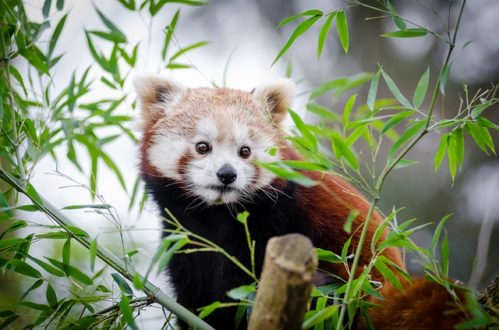
January 26, 2017; New York Times and the Virginian-Pilot
As an eventful January 2017 ground to a close, the Smithsonian’s National Zoo welcomed a grey seal pup into the world. Its mother, a 33-year-old gray seal named Kara, is the oldest grey seal to give birth in a zoo. The birth was also a celebration of the successful conservation activities leading to the number of gray seals rising to more than 600,000 worldwide and the shifting of the species from “endangered” to “least concern” in 2016 by the International Union for Conservation of Nature.
This pregnancy received social media attention. In December, the Washington Post had a Facebook Live presentation of the seal’s ultrasound. After the seal was born, the Zoo tweeted its photo. Virginia Aquarium and Marine Science Center supporter and Radio Free Radio host Sarah Janet Hill thought, “Our seals are cuter than that,” and posted a Twitter challenge to the Virginia Aquarium. The Aquarium accepted the challenge and posted a picture of a seal and osprey.
The tweets started a Twitter war under the #cuteanimaltweetoff hashtag that lasted for days, with activity from zoos and aquariums across the country and worldwide, including Toronto, Tokyo, and Australia. Even other types of organizations participated, including two police departments, which tweeted pictures of their service dogs. On top of that, it received major newspaper coverage, a home run in visibility and attention.
Mashable, an online newspaper centered on technology and social media, described the tweet-off as “social media done right.” But was it? It certainly received enormous attention and lifted peoples’ spirits. Throughout the Twitter war, few tweets weaved in zoos’ and aquariums’ missions. A small number posted uncommon or less-mainstream animals, like geckos and pufferfish. An even smaller number, such as the Lincoln Park Zoo and the Australian Zoo Wildlife Hospital, merged their missions of conservation and fighting the destruction of these animals’ homes in the wild into their message.
Here at the #AustraliaZooWildlifeHospital we get to meet the cutest animals in the world & also save their lives! #cuteanimaltweetoff ??? pic.twitter.com/I6QB0wid8C
— Wildlife Warriors (@wildwarriors) January 26, 2017
Sign up for our free newsletters
Subscribe to NPQ's newsletters to have our top stories delivered directly to your inbox.
By signing up, you agree to our privacy policy and terms of use, and to receive messages from NPQ and our partners.
We love this #cuteanimaltweetoff, but let’s remember conservation behind the cute! @brookfield_zoo @shedd_aquarium https://t.co/ebft3DNn1b pic.twitter.com/EWSOFNmEUr
— Lincoln Park Zoo (@lincolnparkzoo) January 26, 2017
These kinds of spontaneous online events are becoming more common and can rarely be replicated intentionally. Of course, we don’t all deal with adorable baby animals, but in this communications environment, we all should be considering what we want people to understand and remember about our organization for use in such moments and even in less cute times.
Thankfully, there is a second chance. The Smithsonian’s zoo has not named its famous seal pup. They are taking names from the public and inviting potential sponsors to participate. Perhaps the seal pup’s name announcement can set off a second Twitter war focused on preservation and protection of our beautiful land for all species.—Gayle Nelson












